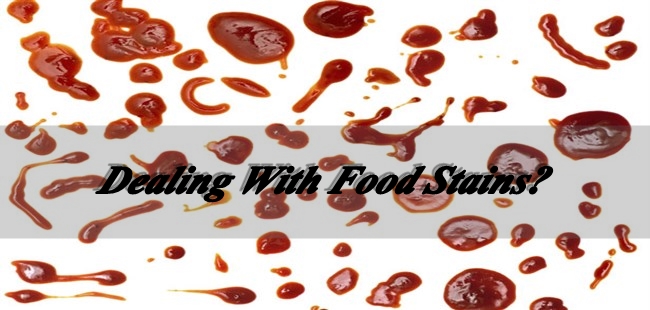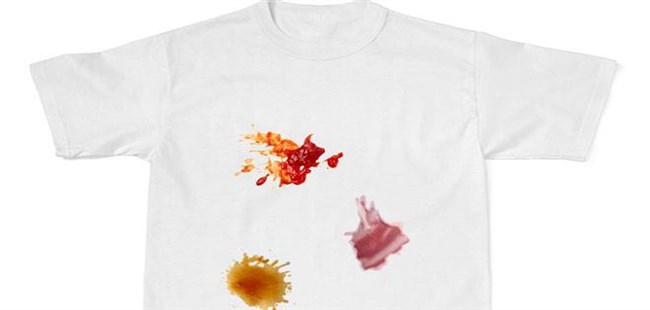The worst culprits are those featured here – stains from greasy foods, egg, and foods containing strong colorings.
Oil And Fat Stains
Grease stains are straightforward to remove scarves are susceptible to grease spots; use from fabric, but they may cause more of a fabric-protection spray on nonwashable items problem on carpets and furniture. Ties and when they are new or newly dry cleaned.
On Carpet
Place a piece of brown paper over the grease mark. Apply the tip of a warm iron until the grease is absorbed into the brown paper.
Apply a solution of carpet shampoo to the remaining mark, using a sponge. Rub into the carpet gently but firmly for a few minutes.
Wipe off the foam with a clean sponge or cloth. Inspect the mark; if it remains or reappears later, repeat the treatment from the beginning.
On Furniture
Sprinkle talcum powder thickly over the grease mark. Let stand until the grease begins to be absorbed.
After 10 minutes, brush off the talcum powder. If the mark still appears to be greasy, repeat the treatment.
On Clothes
General treatment: Blot excess grease, using paper towels. Dab gently, taking care not to spread the stain. For non-delicate fabrics, which can be washed at reasonably high temperatures, laundering will remove residual marks.
Delicate fabrics: Dab delicate fabrics with a little eucalyptus oil, then either hand wash them, or machine wash at a low temperature. If the fabric is to be dry cleaned only, sponge the eucalyptus oil off with clear, warm water.
Ease On Shoes
Leather shoes: Apply a little bicycle puncture repair adhesive to grease spots. Leave overnight, then peel off. Use shoe polish or hide food to finish up. Well- cleaned leather shoes will resist grease – just wipe over with a paper towel.
Suede shoes: Blot well, then rub with a block suede cleaner. Treat bad stains with a pad of white cotton dampened with lighter fluid. Check first on a test area to make sure that the color is not adversely affected.
Other Greasy Stains
Foods such as avocado, peanut butter, and those listed below contain oil or fat, and may leave behind a grease patch. Tackle the grease stain before dealing with any remaining color. Substances such as car oil, ointments, and lotions should also be treated as grease.
Mayonnaise
• On washable fabrics: Sponge with warm water, then soak in a solution of enzymatic detergent before laundering.
• On nonwashable fabrics: Wipe with a damp cloth, then use an aerosol grease solvent.
Mayonnaise On Carpets
Scrape up as much as possible, then blot. Use a general stain remover for light marks, and the carpet treatment opposite to remove heavier stains.
Ice Cream
• On washable fabrics: Wipe with a damp cloth, then soak in a detergent solution.
• On nonwashable fabrics: Blot, then wipe with a damp cloth wrung out in warm water. Use a grease solvent.
• Ice cream on carpets: Scrape up the deposit, and wipe the area with a damp cloth. Clean with a solution of carpet shampoo. Use a stain remover or grease solvent if marks remain.
Gravy
• On washable fabrics: Soak overnight in tepid water, then launder according to the fabric. Soak dried marks in enzymatic detergent if the fabric permits.
• On nonwashable fabrics: Use an aerosol stain remover.
Gravy On Carpets
Scoop up what you can with a spoon, or blot the area dry with paper towels. Treat with a liquid stain remover followed by an application of carpet shampoo.
Egg Stains
The egg stain is a tricky stain. The merest drop of hot water causes it to set and form a crusty deposit that is much harder to remove than a fresh stain. If you cannot treat an egg stain immediately, cover it with a damp cloth to keep it moist and prevent it from setting.
On Furniture
Remove the deposit: Use a damp white cloth to remove the spilled egg. If only egg white has been spilled, sponge the stain with cold, salty water. For yolk alone, dab repeatedly with lather from dishwashing liquid solution.
On Carpets
Basic treatment: Scrape up the deposit, then use a liquid stain remover to tackle what remains. If a mark is still visible when dry, apply a carpet-shampoo solution.
On Clothes
• Washable fabric: Sponge with cold, salty water. Rinse off when the stain has disappeared. Soak in an enzymatic detergent solution if necessary (and appropriate).
• Nonwashable fabric: Sponge with salt water, then sponge off with clear water, and blot dry. Use an aerosol stain remover on remaining marks.
Traditional Tip
Stains on cutlery: Egg, especially boiled egg, stains silver cutlery black. Wipe fresh egg off cutlery after use. Rub black stains with salt.
Colored Food Stains
Color is the last thing you treat when dealing with a food stain. Get rid of the deposit first, then treat any grease element.
Finally, tackle the color, which may require several attempts. Specific treatments for well- known “difficult” food stains appear below.
Food Type On Washable Fabrics On Other Surfaces
Tomato Sauce: Treat tomato sauce and other thick bottled sauces in the same way. Hold fresh stains under cold running water, and rub between your fingers. Apply a prewash treatment, then launder according to the fabric. On carpets, remove deposit, and sponge with warm water. If not dry, apply carpet shampoo, and wipe off. When dry, use a spray stain remover. Follow these steps for nonwashable fabrics, omitting the shampoo.
Mustard
Mustard powder can be brushed off. Prepared mustard produces a stain that is difficult to remove. Rub fresh stains between your fingers in a mild detergent solution, then sponge with an ammonia solution. Soften dried stains at first with a glycerin solution and let stand for at least an hour. Sponge carpets and furniture with a mild detergent solution, then an ammonia solution. Avoid overwetting, and finish by sponging with clean water. Stubborn stains require professional cleaning.
Jam And Preserves
These leave sticky residues that should be scooped up and
wiped with a damp cloth. Laundering should remove stains. Soak dried marks for half an hour in a laundry borax solution. Sponge furniture with a warm dishwashing liquid solution. Sprinkle laundry borax on the mark, and sponge off after 15 minutes. On carpets, use carpet shampoo, then denatured alcohol (try on a test area first).
Curry And Turmeric
These are two of the worst stains. Do not get them on wall coverings where the only solution is a patch. Rinse stains in tepid water. Rub in a glycerin solution, leave for half an hour, and rinse. Launder in enzymatic detergent, if suitable. Use a hydrogen peroxide solution – on persistent stains. Sponge carpets and furniture with a laundry borax solution. If this does not work on furniture, have the covers dry cleaned (if possible). A laundry prewash stick may also be effective on carpets.
Beets
This stain is tough because the color is deep and persistent. Rinse under cold, running water until as much color as possible has come out. Soak colored fabrics in a laundry borax solution. Do not attempt to remove stains on nonwashable fabrics or furniture yourself. Have both slipcovers and upholstery professionally cleaned?
Chocolate: Dropped pieces of chocolate are a problem once they get warm or if someone sits on them. Allow to set, then scrape the dry deposit with a blunt knife. Soak, then launder in enzymatic detergent if suitable; otherwise, launder as usual. Allow to set, then scrape up with a blunt knife. Apply a lather of carpet shampoo (for both furniture and carpets), rubbing in gently. Wipe off with a damp cloth, and use a liquid stain remover when dry.






